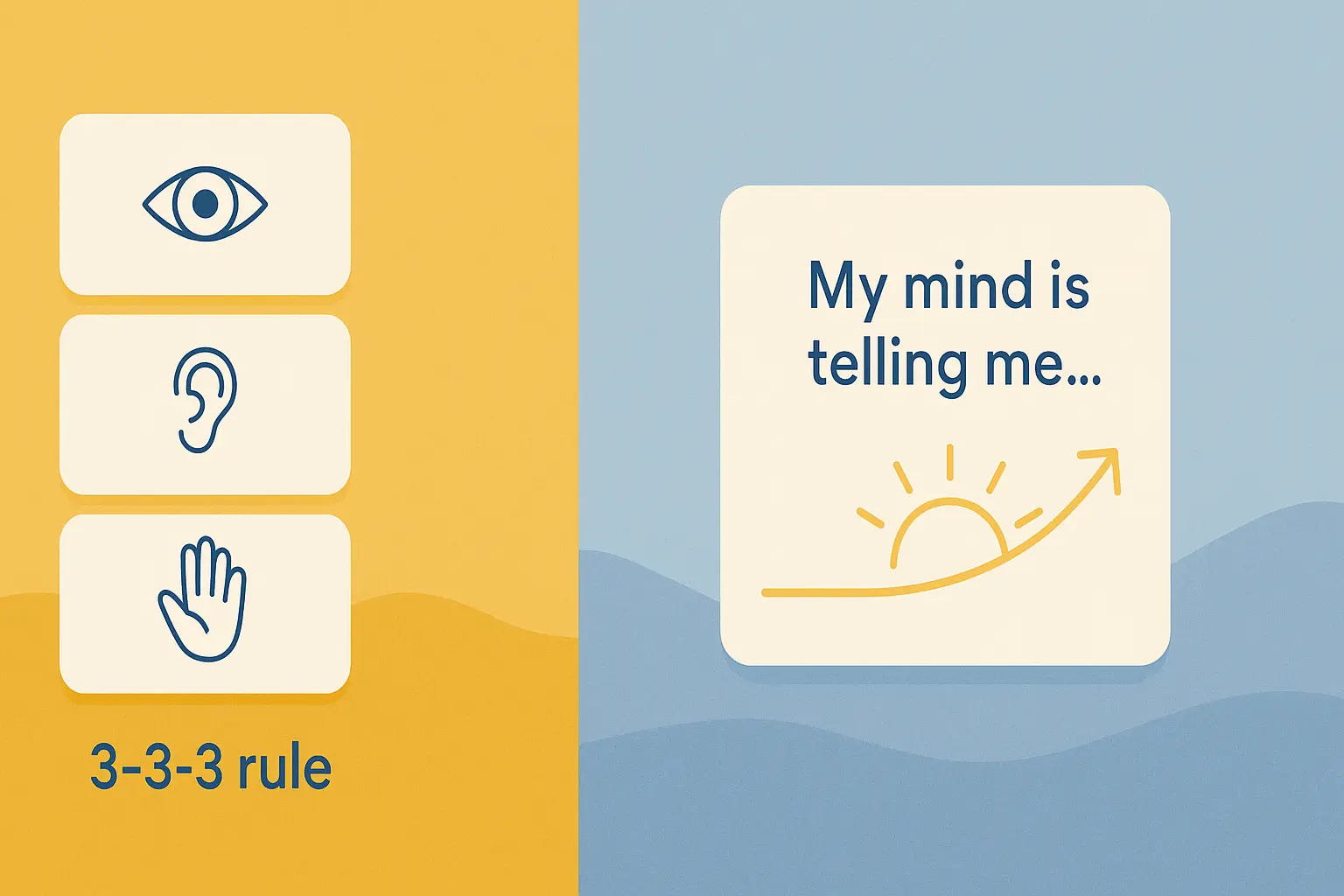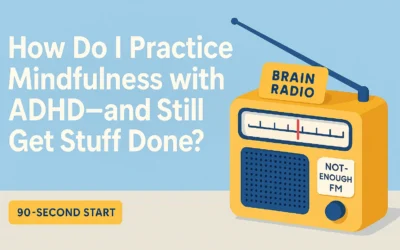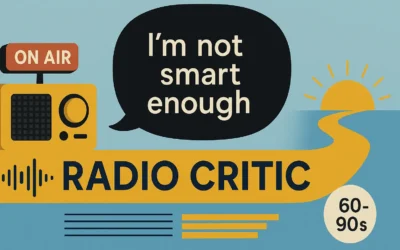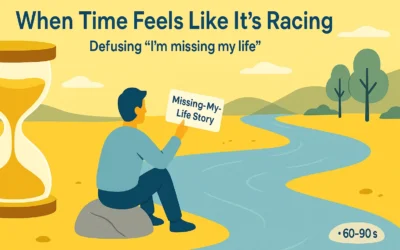Last week, I found myself staring at a half-written email, heart pounding as if hitting “send” could mess up my entire career. You know that cycle: type a line, delete it, read it over ten times, freeze because your brain whispers: “This will make you look dumb.”
Now, usually, I would lean on the 3-3-3 rule for anxiety: notice three things you see, three you hear, three you can move. It’s a reliable grounding trick (Verywell Mind, 2024). But sitting at my desk, stuck in an overthinking spiral, it felt clunky. I didn’t need to count ceiling tiles, I needed a way to let go of the thought itself.
That’s when I tried something straightforward: a five-word switch.
Why words work better than wrestling
Here’s the thing: whenever I try to argue with my thoughts, “Stop overthinking, just send the email,” they only get louder. Psychologists have shown that trying to suppress thoughts usually backfires, making them return even stronger (Wenzlaff & Wegner, Harvard University).
On the flip side, putting thoughts into words has a calming effect on the brain. A study using fMRI at UCLA found that when people expressed their feelings in words, the brain’s alarm center (the amygdala) became less active. Meanwhile, the prefrontal cortex, the part of the brain that controls rational thinking, became more active (Lieberman et al., 2007).
And in Acceptance and Commitment Therapy (ACT), there’s a skill called cognitive defusion, which involves learning to view thoughts as words rather than facts. Even just one quick exercise can help a sticky thought seem less believable (Masuda et al., 2004; 2009).
The 5-Word Switch
Here’s how it works:
- Catch the thought exactly as it shows up.
“This email will make me look dumb.” - Add five words before it.
“My mind is telling me…”
My mind is telling me this email will make me look dumb. - Read it once, slowly.
That small shift is huge. Suddenly, it’s no longer the truth, just something my mind says. A ticker of text scrolling by, not a command I have to obey.
Then, take one small step
Once the thought loses some of its grip, the next move is action. Not a big one, but rather just a two-minute step that reflects what matters to you.
For me, it was pasting a clear opening line and asking, “Is this email clear enough?” Then I sent it to one reviewer. Done.
Instead of battling my brain for hours, I moved forward in minutes.
Every day spirals, same switch
This isn’t just for emails; you can use it in various settings, gatherings, and situations.
- Social replay:
Thought: “Everyone noticed my awkward joke.”
Switch: “My mind is telling me everyone noticed my awkward joke.”
Step: Send one thank-you text, then close the app. - Health googling at 1 a.m.:
Thought: “This tingling is catastrophic.”
Switch: “My mind is telling me this tingling is catastrophic.”
Step: Note one fact, set a reminder to message your doctor tomorrow. - Money panic:
Thought: “I’ll never catch up.”
Switch: “My mind is telling me I’ll never catch up.”
Step: Cancel one unused subscription or schedule a 15-minute budget slot.
So, 3-3-3 or 5 words?
Both have their place.
- 3-3-3 grounds you quickly when anxiety surges (Soula Care, D’Amore Mental Health).
- The 5-word switch works when thoughts loop endlessly, turning noise into words you can watch instead of obey. Studies suggest labeling and defusion don’t just distract you—they actually reduce the thought’s grip (Lieberman et al., 2007; Masuda et al., 2009).
A 7-day experiment
Here’s a challenge:
- Each day, write down your loudest overthinking thought.
- Add the five words: “My mind is telling me…”
- Take one two-minute values-based step.
- By Day 7, notice which thought feels less believable—and which action nudged your life forward despite the chatter.
Your mind will keep talking. That’s what minds do. But with five words, you don’ t have to keep believing.
References (easy links):
- Verywell Mind: 3-3-3 rule for anxiety
- Wenzlaff & Wegner: Thought suppression & rebound
- Lieberman et al. (2007): Putting feelings into words reduces amygdala response
- Masuda et al. (2004, 2009): Defusion reduces believability of negative thoughts
- Soula Care: What is the 3-3-3 rule
(Educational content only; not a substitute for professional help if worry feels overwhelming.)













0 Comments